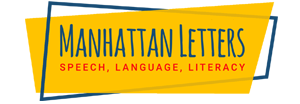The following six techniques and exercises will help facilitate early childhood speech, language, and communicative development; in particular, they will assist the child with a speech & language delay. About.com features video clips of myself explaining and demonstrating each technique.
According to seminal research by Dr. Todd Risley, American babies from families of all socio-economic levels heard on average 1,440 words per hour, and by age three had practiced saying between 4 million to 12 million words. The difference in how much a parent and child talked to each other was strongly correlated with the differences in the toddler’s vocabulary and intellectual achievement at both at age three and age nine. In other words, children tended to develop better vocabularies and have better intellectual achievement if their parents were more social with them.
1) Adult talks to a child using simple descriptive language.
The best way to engage a young child is by establishing eye contact at the child’s level, speaking in simple short sentences, responding to the child's communicative gestures, and talking about what the child is experiencing such as playing with blocks, watching vehicles pass on the street, or pretending while at play, and of course, having fun with the child! Children are more verbal when they understand and are comfortable with what is being said to them: when the language is simple and descriptive, e.g. The cat is big, rather than imperative, e.g. Draw a cat, and when the child is not bombarded by questions, e.g. Is that a cat or What is that A child who is comfortable and is interested in the activity, will have many opportunities to communicate with you.
2) Adult repeats and/or exaggerates sound(s) or word(s).
Children are more likely to imitate speech when they are interested in the activity and an adult says sounds and connects them to meaning. For example, the adults say, “vroom vroom,” while pushing a toy car or “up up up up” as a toy climbs the couch, or “mmmmmmmmm” when a doll eats a toy apple.
3) Adult expands what child says.
As children learn to speak, they typically say less than what they are thinking. When an adult expands what the child is trying to communicate, it gives him or her an opportunity to expand their previous utterance.
Example:
Child: “Car go”
Adult: “The car goes in the tunnel.”
Child: “Car go tunnel.”
4) Adult has child imitate desired speech (incidentally and explicitly) during play.
One of the most effective ways to teach sounds and words during early childhood development is to have the child imitate speech while he or she is engaged in meaningful activity. Some children independently imitate speech naturally while others need explicit instruction. Children with speech and language delays need additional opportunities to practice speech by imitating sounds, syllables, words, phrases, grammatical forms such as plurals, e.g. dogs, past tense, walked, and simple sentences, e.g. I want milk. It's usually a good sign when a child is able to imitate speech provided it’s meaningful and age-appropriate. Children who say “Obama” after it is modeled by their parents, may not understand what they are saying. If the child, for example, is starting to add “ing” to verbs in their spontaneous speech and says “running” in imitation of an adult saying that while playing chase, it indicates that the child is learning new speech and language forms.
5) Adult provides a fill-in.
Some children learning to speak are not ready to imitate speech on command. Fill-ins provide wonderful speaking opportunities.
Example: Adult says, “Ready, set, ____” and the child says, “go!”
Adult says, “Give _” and the child says “me!”
6) Adult provides a sound cue.
Sometimes when children are learning new words, their brain cannot automatically retrieve the newly acquired word. Providing a sound cue, including action words, helps the child communicate new words with less frustration.
Example: Child is trying to open a closed container and does not use any words. The adult exaggerates saying “o” and the child replies “open” to request help opening a closed container.
The child wants to wear a hat and points to the top of its head. The adult models ha and the child requests, hat.
Craig Selinger is a pediatric speech-language therapist with a private practice in Park Slope, Brooklyn. He works with babies and pre-adolescents with speech, language, feeding delays, and difficulties. In addition, he provides specialized tutoring services (reading, writing, speaking, and listening) for struggling learners and those with learning differences. His speech, language, literacy, and the feeding team travel to your home and your child’s school throughout Brooklyn, Manhattan, and Queens. Contact: [email protected], 347-394-3485, www.brooklynlearning.com.
